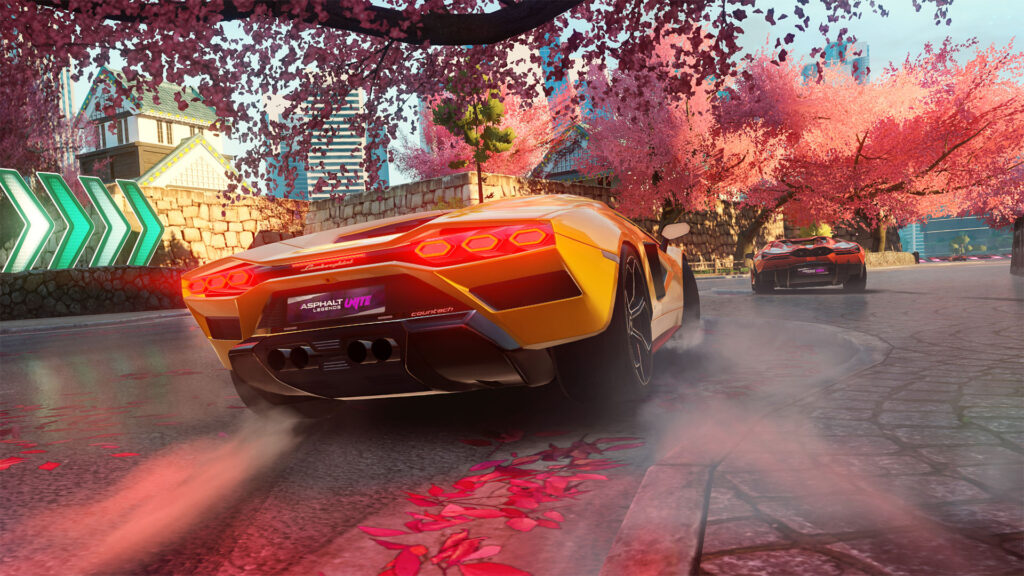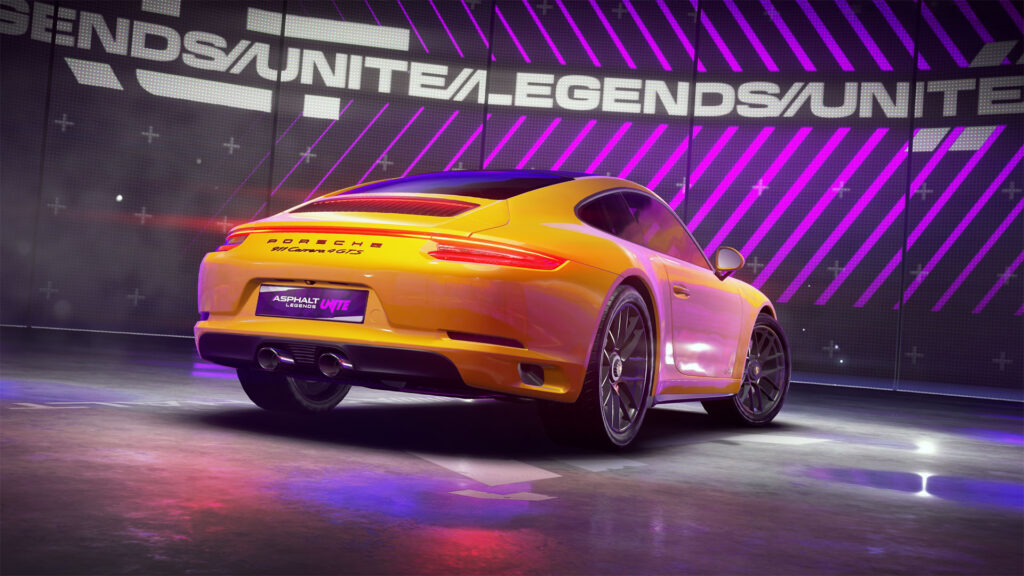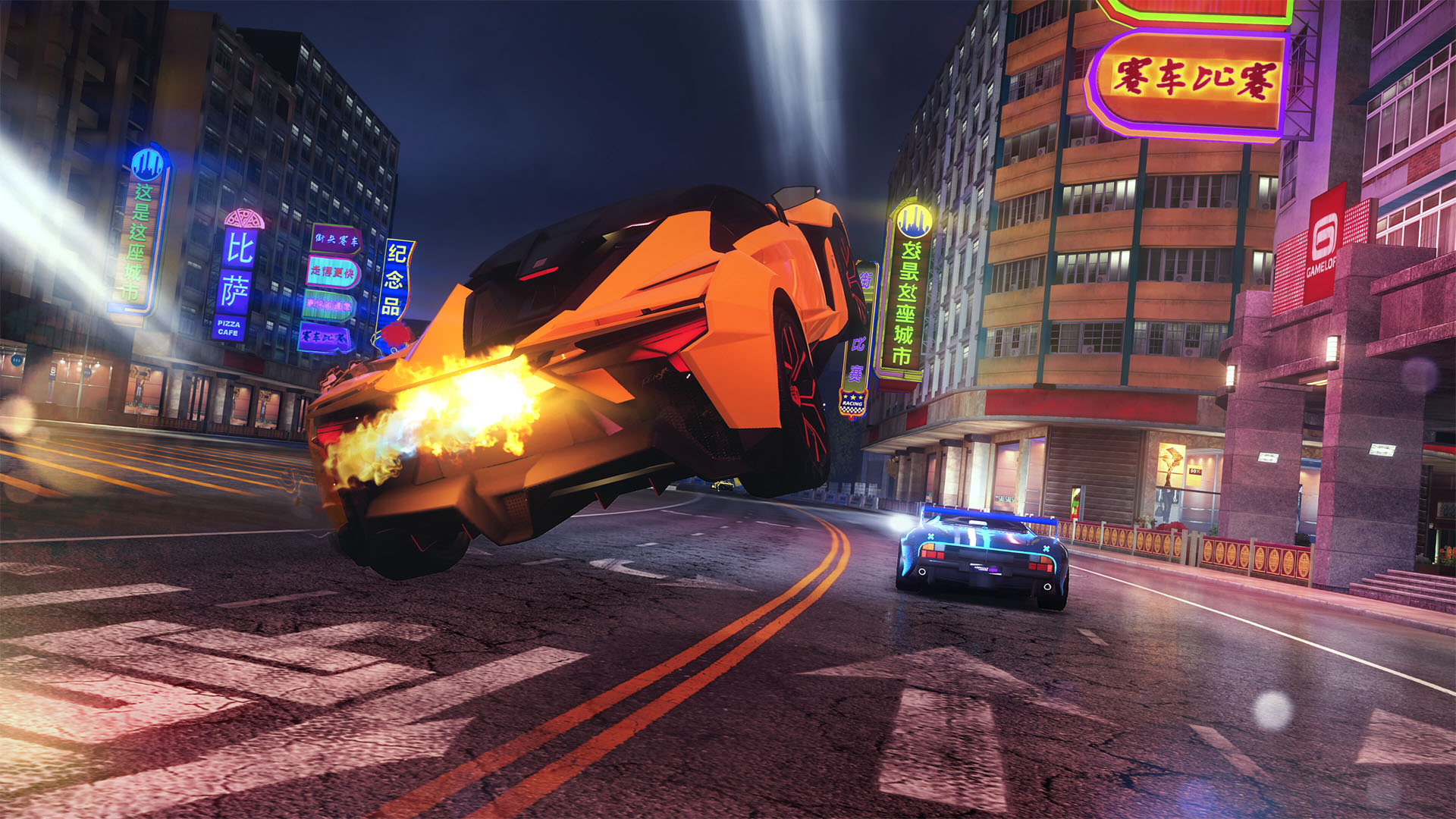Shop sim racing equipment
The Asphalt arcade racing series is synonymous with mobile gaming, with the first entry, Asphalt Urban GT, launching on the maligned Nokia N-Gage in 2004 before being ported to Java-based mobile phones and Nintendo DS.
With over one billion downloads, nine mainline entries and 12 spinoffs, it’s now one of the most popular and enduring arcade racing series.
Asphalt 9: Legends was a turning point for the series. Following the initial 2018 mobile release, the ninth game was later ported to PC and consoles, now rebranded as Asphalt Legends, formerly Asphalt Legends Unite.
Asphalt games are action-focused, with unapologetically over-the-top stunts. Car handling is simplified, there’s an emphasis on destruction, and you can perform physics-defying 360-degree spins at the tap of a button. Need for Speed games seem realistic compared to Asphalt – and that’s no bad thing. With a shortage of pure arcade racers on PC and consoles, making the series multiplatform was a logical step.
“Our audience is now very diverse”
“You have some [racing] titles that are not that arcade. They strike a balance between arcade and simulation. Plus, there are not many free-to-play [racing] games,” Raúl Orrego, Game Manager at Gameloft, told Traxion.
“If we release this on PlayStation, Xbox or Switch, [we thought] we don’t need to build another game. We have the tech to do it.”

Asphalt utilises an in-house engine created and maintained by Gameloft Barcelona. “We don’t use commercial engines like Unity or Unreal. We have an engine that is very specialised for racing and action,” Orrego explains.
“With this engine, we were able to increase the game’s quality. Asphalt 9 was developed for mobile. But as we have our internal engine, we were able to work the tech out so you can have a version on mobile that looks good, depending on your device, but also run on PlayStation, Xbox and Steam.”
With the latest entry playable on every major platform from Android to PlayStation 5 Pro, Asphalt Legends has introduced new players to the high-octane arcade racing series.
“Our audience is now very diverse – it’s not like 80% mobile,” says Orrego, who adds that Asphalt Legends attracts between 100,000 and 150,000 daily players on average across all platforms. “It’s almost half and half between PC and console with mobile.”
Asphalt Legends is the first playable entry on PlayStation since Asphalt Injection, a 2011 launch title for the PlayStation Vita. Now, it’s one of Asphalt’s lead platforms.

“One of the main platforms right now is PlayStation,” says Orrego. “Switch and Xbox are very relevant, too. On Steam, the players are very positive with their reviews.”
To capitalise on the PlayStation version’s popularity, Asphalt Legends introduced new PlayStation 5-exclusive competitive tournaments this week, where players can sign up to compete in timed knockout events to win rewards.
While Asphalt Legends’ reception has been “very good,” according to Orrego, a graphics upgrade led to technical issues at launch. “When we did that, we lost a lot of players. Players went back to Asphalt 8 – we saw a peak in the previous game. We have been continuously working on fixing this balance.”
Adapting Asphalt Legends for different platforms as technology evolves while optimising the graphics and performance “has been a constant challenge,” according to Orrego – even on mobiles. “On Android, you have so many different devices with different chipsets. We are constantly trying to monitor performance and improve the experience for players,” says Orrego.
Although it’s playable on PC and consoles, Asphalt Legends’ mobile origins are obvious. The arcade racer is free-to-play, with depleting fuel meters limiting how long you can drive each car. Acquiring cars requires unlocking tokens, an in-game currency that can be purchased with real-world money.
“We are trying to understand how to fit this racing collection fantasy on mobile and PC,” adds Orrego.
The challenge of adapting Asphalt for PC and consoles
Adapting Asphalt’s mobile touchscreen controls when navigating menus for other platforms presented another challenge.
“Asphalt has a lot of menus. The tech was prepared for mobiles and touchscreens. Now you need to move the same menus with a controller, and it’s clumsy,” says Orrego. “We had to fit that navigation for everything. Now, when we build a new feature, we make sure it works with controllers.”
Asphalt’s short races make it suitable for playing on the go in small bursts, with events usually lasting less than two minutes. But this quick-fire style doesn’t always appeal to console and PC players.

“When you are playing and you want to race on your console, you sit down, you connect the console, you put in the game, you turn on the TV and get something to eat or drink, and then you make the time. But when you’re on your phone, you can do it very quickly,” says Orrego.
“So you sit down and play a loop: you finish a race, and then you go back to a menu. That works well on mobile, but not as well on PC or consoles.”
In response to player feedback, Gameloft Barcelona plans to add longer races for PC and consoles. “We are working on events with more laps and looking at how to improve that experience on consoles,” says Orrego. “We need to maintain a game that works everywhere.”

Around every two months, live-service updates help keep Asphalt Legends “feel fresh and alive.” Celebrating the series’ 20th anniversary, the current Legends of Speed season features a special track combining circuits from previous games in a limited-time event.
“We can double down on Asphalt Legends Unite and see if we can improve to make it a game we can sustain constantly like Fortnite or Candy Crush,” says Orrego when asked what the future holds for Asphalt. “Or we could do Asphalt 10 and change the graphics in a big way.
“We haven’t had these conversations yet. We are making sure that every update can attract players back to Asphalt and keep them there.”





Chat with the Community
Sign Up To CommentIt's completely Free